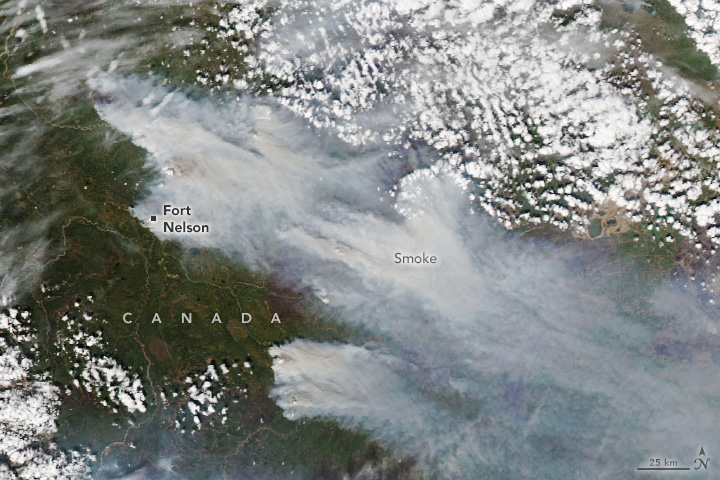The U.S. Midwest is currently experiencing its first air quality alerts of the season due to smoke from wildfires in Western Canada drifting south and east. There are 138 active fires across Canada, with 40 still uncontained. One particularly threatening blaze near Fort Nelson in British Columbia has led to evacuation orders being issued for the surrounding areas. NASA has captured images of the smoke from these wildfires moving towards the Upper Midwest, prompting warnings for people to avoid travel in and around Fort Nelson due to extreme fire behavior and dry fuel conditions.
The wildfire season in Canada has already seen 986 fires burning nearly 600 acres, and this is just the beginning of the season. Typically, wildfire activity starts later into the summer, but this year is showing increased activity. Authorities in British Columbia have imposed a ban on open burning until the end of October to ensure public safety. The smoke plume drifting towards the Upper Midwest and Great Lakes regions has triggered air quality alerts in several states, with the Canadian organization, Canadian Interagency Forest Fire Centre (CIFFC), setting the national preparedness level to two. This level indicates increasing wildfire activity in one or more jurisdictions with light demand for firefighting resources, which could escalate as conditions worsen.
Last year’s active wildfire season in Canada and the U.S. led to widespread smoke across the eastern seaboard. The spread of wildfires is influenced by factors such as dry vegetation, moisture levels, wind, and heat, with the resulting impact on ecosystems, plant cover, carbon sequestering, and biodiversity. Additionally, wildfires can have adverse effects on animals, birds, reptiles, and insects. The smoke and ash released into the atmosphere can also cause pollution and contaminate water sources. Breathing in the particulates from wildfire smoke can lead to health issues such as headaches, dizziness, and eye irritation. The authorities are closely monitoring the situation to ensure the safety of residents and wildlife in the affected areas.
NASA’s satellites have been instrumental in tracking the movement of smoke from wildfires in Canada towards the U.S. Midwest and issuing timely warnings to residents and authorities in the impacted regions. The aggressive and extreme fire behavior in British Columbia has prompted evacuation orders and warnings to avoid travel in certain areas. The dry fuel conditions and strong winds are exacerbating the situation, making containment efforts challenging. With the wildfire season starting earlier than usual, resources are being mobilized to manage the increasing fire activity and protect communities from the potential risks associated with wildfires.
The impact of wildfires extends beyond the immediate threat of fire, affecting air quality, water sources, ecosystems, and biodiversity. The Canadian authorities are taking proactive measures to prevent further escalation of the wildfires by implementing a ban on open burning and issuing evacuation orders in high-risk areas. The air quality alerts in the U.S. Midwest serve as a reminder of the interconnectedness of environmental events across regions and the importance of collaboration in mitigating the effects of wildfires. By monitoring and responding to wildfire activity in a timely and coordinated manner, authorities can minimize the impact on human health, ecosystems, and communities.


